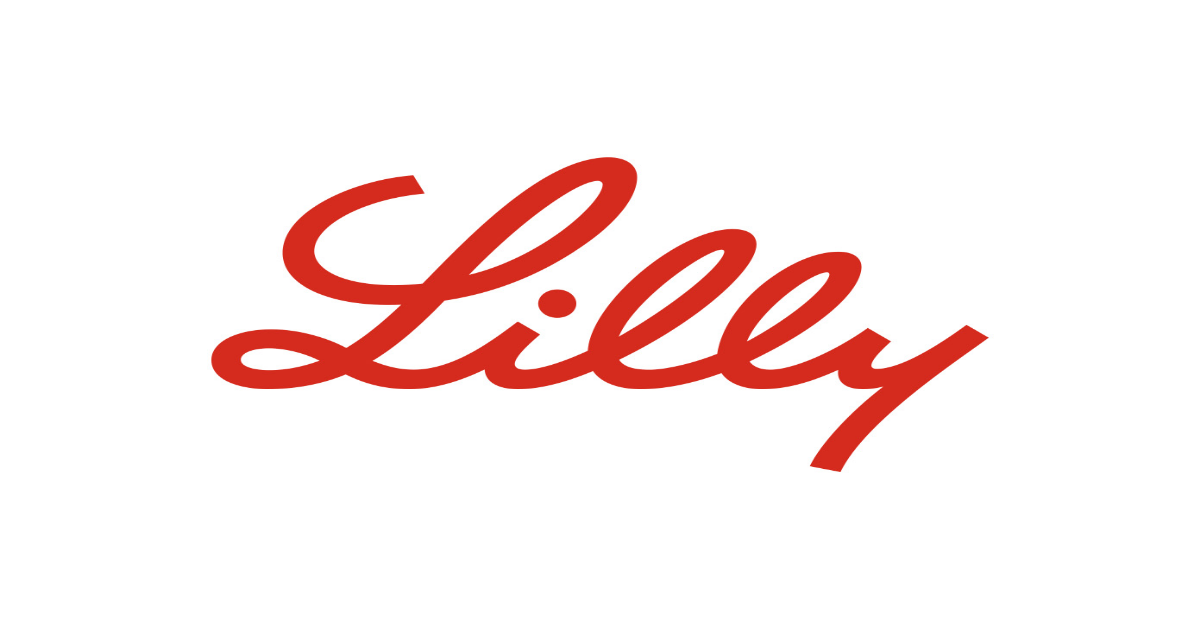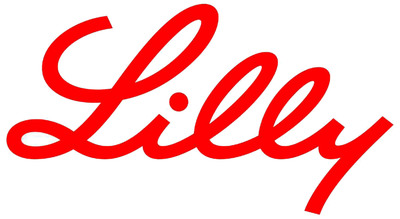Orforglipron is the first small molecule GLP-1 to successfully complete a Phase 3 trial, lowering A1C by an average of 1.3% to 1.6% across doses
The investigational once-daily oral pill reduced weight by an average 16.0 lbs (7.9%) at the highest dose in a key secondary endpoint
The overall safety and tolerability profile of orforglipron in ACHIEVE-1 was consistent with injectable GLP-1 therapies
INDIANAPOLIS, April 17, 2025 /PRNewswire/ — Eli Lilly and Company (NYSE: LLY) today announced positive topline Phase 3 results from ACHIEVE-1, evaluating the safety and efficacy of orforglipron compared to placebo in adults with type 2 diabetes and inadequate glycemic control with diet and exercise alone. Orforglipron is the first oral small molecule glucagon-like peptide-1 (GLP-1) receptor agonist, taken without food and water restrictions, to successfully complete a Phase 3 trial. If approved, the company is confident in its ability to launch orforglipron worldwide without supply constraints. This would further Lilly’s mission to reduce chronic diseases like type 2 diabetes, which is expected to impact an estimated 760 million adults by 2050.1
“ACHIEVE-1 is the first of seven Phase 3 studies examining the safety and efficacy of orforglipron across people with diabetes and obesity. We are pleased to see that our latest incretin medicine meets our expectations for safety and tolerability, glucose control and weight loss, and we look forward to additional data readouts later this year,” said David A. Ricks, Lilly chair and CEO. “As a convenient once-daily pill, orforglipron may provide a new option and, if approved, could be readily manufactured and launched at scale for use by people around the world.”
In the first Phase 3 trial of the ACHIEVE program, orforglipron met the primary endpoint of superior A1C reduction compared to placebo at 40 weeks, lowering A1C by an average of 1.3% to 1.6% from a baseline of 8.0%, using the efficacy estimand.2 In a key secondary endpoint, more than 65% of participants taking the highest dose of orforglipron achieved an A1C less than or equal to 6.5%, which is below the American Diabetes Association’s (ADA) defined threshold for diabetes.3 In an additional key secondary endpoint, participants taking orforglipron lost an average of 16.0 lbs (7.9%) at the highest dose. Given that participants had not yet reached a weight plateau at the time the study ended, it appears that full weight reduction was not yet attained.
Efficacy Estimand Results
Orforglipron
3 mg
Orforglipron
12 mg
Orforglipron
36 mg
Placebo
Primary Endpoint
A1C reduction from
baseline of 8.0%
1.3 %
1.6 %
1.5 %
0.1 %
Key Secondary Endpoints
Percent weight reduction from baseline of 90.2 kg
(198.9 lbs)i,ii
4.7 %
6.1 %
7.9 %
1.6 %
Weight reduction from
baseline of 90.2 kg
(198.9 lbs)i,ii
4.4 kg (9.7 lbs)
5.5 kg (12.2 lbs)
7.3 kg (16.0 lbs)
1.3 kg (2.9 lbs)
iBody weight secondary endpoints for orforglipron 3 mg were not controlled for type 1 error.
iiMean body weight reduction did not reach plateau by 40 weeks.
For the treatment-regimen estimand,4 each dose of orforglipron led to statistically significant A1C reductions. In the key secondary endpoint for body weight, 12 mg and 36 mg doses led to statistically significant reductions.
- A1C reduction: 1.2% (3 mg), 1.5% (12 mg), 1.5% (36 mg), 0.4% (placebo)
- Percent weight reduction: 4.5% (3 mg), 5.8% (12 mg), 7.6% (36 mg), 1.7% (placebo)
- Weight reduction: 4.2 kg (9.3 lbs; 3 mg), 5.2 kg (11.5 lbs; 12 mg), 7.2 kg (15.8 lbs; 36 mg), 1.5 kg (3.4 lbs; placebo)
The overall safety profile of orforglipron in ACHIEVE-1 was consistent with the established GLP-1 class. The most commonly reported adverse events were gastrointestinal-related and generally mild to moderate in severity. The most common adverse events for participants treated with orforglipron (3 mg, 12 mg and 36 mg, respectively) were diarrhea (19%, 21% and 26%) vs. 9% with placebo, nausea (13%, 18% and 16%) vs. 2% with placebo, dyspepsia (10%, 20% and 15%) vs. 7% with placebo, constipation (8%, 17% and 14%) vs. 4% with placebo, and vomiting (5%, 7% and 14%) vs. 1% with placebo. Overall treatment discontinuation rates due to adverse events were 6% (3 mg), 4% (12 mg) and 8% (36 mg) for orforglipron vs. 1% with placebo. No hepatic safety signal was observed.
The ACHIEVE-1 results will be presented at ADA’s 85th Scientific Sessions and published in a peer-reviewed journal. More results from the ACHIEVE Phase 3 clinical trial program will be shared later this year, along with findings from the ATTAIN Phase 3 clinical trial program evaluating orforglipron for weight management. Lilly expects to submit orforglipron for weight management to global regulatory agencies by the end of this year, with the submission for the treatment of type 2 diabetes anticipated in 2026.
About orforglipron
Orforglipron (or-for-GLIP-ron) is an investigational, once-daily small molecule (non-peptide) oral glucagon-like peptide-1 receptor agonist that can be taken any time of the day without restrictions on food and water intake.5 Orforglipron was discovered by Chugai Pharmaceutical Co., Ltd. and licensed by Lilly in 2018. Chugai and Lilly published the preclinical pharmacology data of this molecule together.6 Lilly is running Phase 3 studies on orforglipron for the treatment of type 2 diabetes and for weight management in adults with obesity or overweight with at least one weight-related medical problem. It is also being studied as a potential treatment for obstructive sleep apnea and hypertension in adults with obesity.
About ACHIEVE-1 and ACHIEVE clinical trial program
ACHIEVE-1 (NCT05971940) is a Phase 3, 40-week, randomized, double-blind, placebo-controlled trial comparing the efficacy and safety of orforglipron 3 mg, 12 mg and 36 mg as monotherapy to placebo in adults with type 2 diabetes and inadequate glycemic control with diet and exercise alone. The trial randomized 559 participants across the U.S., China, India, Japan and Mexico in 1:1:1:1 ratio to receive either 3 mg, 12 mg or 36 mg orforglipron or placebo. The objective of the study was to demonstrate that orforglipron (3 mg, 12 mg, 36 mg) is superior in A1C reduction from baseline after 40 weeks, compared to placebo, in people with type 2 diabetes who have not taken any anti-diabetic medications for at least 90 days prior to visit 1, and are naïve to insulin therapy. Study participants had a HbA1c between ≥7.0% and ≤9.5% and a BMI of ≥23 kg/m2. All participants in the orforglipron treatment arms started the study at a dose of orforglipron 1 mg once-daily and then increased the dose in a step-wise approach at four-week intervals to their final randomized maintenance dose of 3 mg (via a 1 mg step), 12 mg (via steps at 1 mg, 3 mg and 6 mg) or 36 mg (via steps at 1 mg, 3 mg, 6 mg, 12 mg and 24 mg). Flexible dosing was not permitted.
The ACHIEVE Phase 3 global clinical development program for orforglipron has enrolled more than 6,000 people with type 2 diabetes across five global registrational trials. The program began in 2023 with results anticipated later this year and into 2026.
About Lilly
Lilly is a medicine company turning science into healing to make life better for people around the world. We’ve been pioneering life-changing discoveries for nearly 150 years, and today our medicines help tens of millions of people across the globe. Harnessing the power of biotechnology, chemistry and genetic medicine, our scientists are urgently advancing new discoveries to solve some of the world’s most significant health challenges: redefining diabetes care; treating obesity and curtailing its most devastating long-term effects; advancing the fight against Alzheimer’s disease; providing solutions to some of the most debilitating immune system disorders; and transforming the most difficult-to-treat cancers into manageable diseases. With each step toward a healthier world, we’re motivated by one thing: making life better for millions more people. That includes delivering innovative clinical trials that reflect the diversity of our world and working to ensure our medicines are accessible and affordable. To learn more, visit Lilly.com and Lilly.com/news, or follow us on Facebook, Instagram and LinkedIn. P-LLY
Endnotes and References:
- Facts & figures International Diabetes Federation. (2025, April 7). https://idf.org/about diabetes/diabetes-facts-figures/
- The efficacy estimand represents efficacy had all participants remained on study intervention (with possible dose interruptions) for 40 weeks without initiating additional antihyperglycemic medications (>14 days of use).
- American Diabetes Association. (n.d.). Understanding diabetes diagnosis. Diabetes Diagnosis & Tests | ADA. https://diabetes.org/about-diabetes/diagnosis
- The treatment-regimen estimand represents the estimated average treatment effect regardless of treatment discontinuation or initiation of additional antihyperglycemic medications.
- Ma X, Liu R, Pratt EJ, Benson CT, Bhattachar SN, Sloop KW. Effect of Food Consumption on the Pharmacokinetics, Safety, and Tolerability of Once-Daily Orally Administered Orforglipron (LY3502970), a Non-peptide GLP-1 Receptor Agonist. Diabetes Ther. 2024 Apr;15(4):819-832. doi: 10.1007/s13300-024-01554-1. Epub 2024 Feb 24. PMID: 38402332; PMCID: PMC10951152.
- T. Kawai, B. Sun, H. Yoshino, D. Feng, Y. Suzuki, M. Fukazawa, S. Nagao, D.B. Wainscott, A.D. Showalter, B.A. Droz, T.S. Kobilka, M.P. Coghlan, F.S. Willard, Y. Kawabe, B.K. Kobilka, & K.W. Sloop, Structural basis for GLP-1 receptor activation by LY3502970, an orally active nonpeptide agonist, Proc. Natl. Acad. Sci. U.S.A. 117 (47) 29959-29967, https://doi.org/10.1073/pnas.2014879117 (2020).
Cautionary Statement Regarding Forward-Looking Statements
This press release contains forward-looking statements (as that term is defined in the Private Securities Litigation Reform Act of 1995) about orforglipron as a potential treatment for adults with type 2 diabetes, Lilly’s ability to supply orforglipron, if approved, and the timeline for future readouts, presentations, and other milestones relating to orforglipron and its clinical trials and reflects Lilly’s current beliefs and expectations. However, as with any pharmaceutical product, there are substantial risks and uncertainties in the process of drug research, development, and commercialization. Among other things, there is no guarantee that planned or ongoing studies will be completed as planned, that future study results will be consistent with study results to date, that orforglipron will prove to be a safe and effective treatment for type 2 diabetes, that orforglipron will receive regulatory approval, or that Lilly will execute its strategy as expected. For further discussion of these and other risks and uncertainties that could cause actual results to differ from Lilly’s expectations, see Lilly’s Form 10-K and Form 10-Q filings with the United States Securities and Exchange Commission. Except as required by law, Lilly undertakes no duty to update forward-looking statements to reflect events after the date of this release.
Trademarks and Trade Names
All trademarks or trade names referred to in this standby statement are the property of the company, or, to the extent trademarks or trade names belonging to other companies are references in this press release, the property of their respective owners. Solely for convenience, the trademarks and trade names in this press release are referred to without the ® and ™ symbols, but such references should not be construed as any indicator that the company or, to the extent applicable, their respective owners will not assert, to the fullest extent under applicable law, the company’s or their rights thereto. We do not intend the use or display of other companies’ trademarks and trade names to imply a relationship with, or endorsement or sponsorship of us by, any other companies.
![]() View original content to download multimedia:https://www.prnewswire.com/news-releases/lillys-oral-glp-1-orforglipron-demonstrated-statistically-significant-efficacy-results-and-a-safety-profile-consistent-with-injectable-glp-1-medicines-in-successful-phase-3-trial-302430985.html
View original content to download multimedia:https://www.prnewswire.com/news-releases/lillys-oral-glp-1-orforglipron-demonstrated-statistically-significant-efficacy-results-and-a-safety-profile-consistent-with-injectable-glp-1-medicines-in-successful-phase-3-trial-302430985.html
SOURCE Eli Lilly and Company

